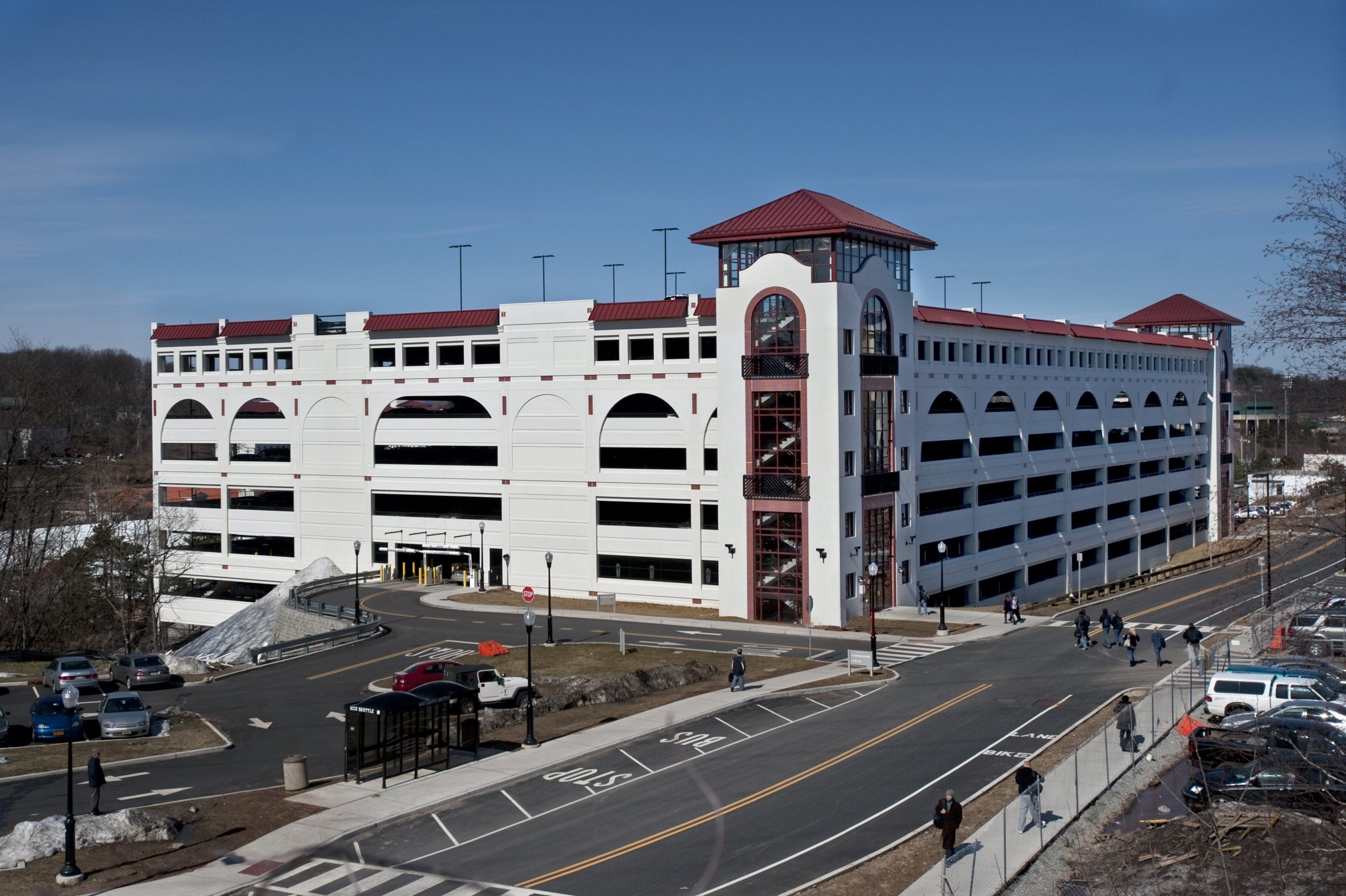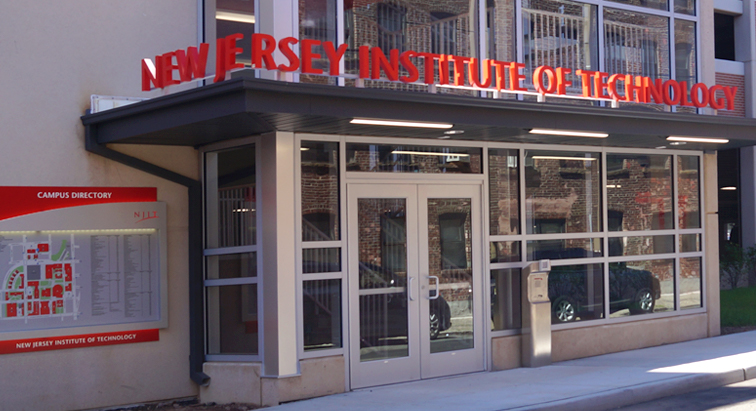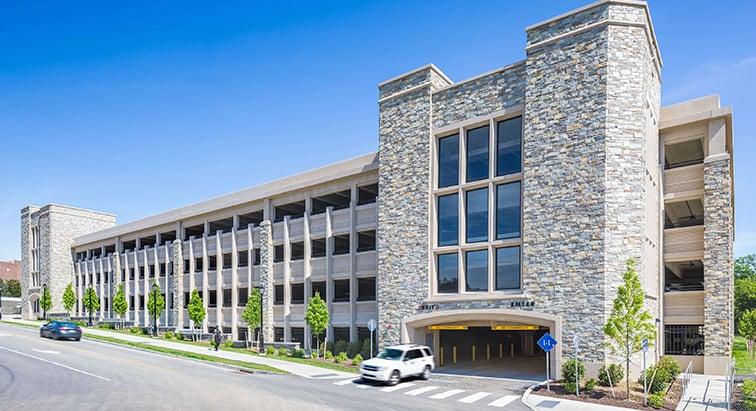Want quick responses to our most asked precast questions? Our blog series, “FAQ Fridays,” is designed to answer your most popular questions, organized by topic and product category. In Part 7 of this series, we discuss Parking Structures.
The main goal for developers and architects in parking structure projects is to design spaces that fit into the surrounding area while providing parking capacity that also meets the needs of the community. There is a lot to consider when it comes to building parking garages and complexes. Safety, traffic flow, design, usage flexibility and durability mark the beginning of key, determining factors for projects of this nature. Below are the most common questions we get when considering precast for Parking Structures.
How do I determine optimum bay sizes when laying out a parking structure?
Efficiency and economy in precast concrete construction is driven by repetition, standardization, and minimum number of pieces. Optimum bay sizes are most based upon the width of the standard double tee module being used. A garage manufactured by a precaster utilizing 12' wide double tees would optimally use 36' or 48' bays while a garage constructed with 15' wide double tees would implement 30' or 45' bays. Precasters in the project region should be consulted to determine available modules.
The most common length of a double tee is 60’ long, which works for parking layouts.
Download our Parking Structures Design Considerations Checklist to get started. Visit our Solutions Center to submit your questions and get producer expert guidance: design assistance, budgeting, schedule planning, and more.
What is the maximum length you would recommend for a garage without an expansion joint?
Care should be taken in keeping the stiff elements away from the extremities of a garage, but when this is done, it is possible to build a garage up to 325 feet in length without the need for an expansion joint. Attention must also be given to diaphragm loads, and the spacing of shear walls.
What floor-to-floor height is recommended in a parking structure?
When the overall height of the structure is not a problem, we recommend floor to floor heights of 10' - 4" as a minimum. This will provide a clear height of 7' - 6" for each level within the structure and will help in making the garage feel more open as well as improving the lighting and the visibility of signage. Additional clearance is sometimes required to meet ADA requirements.
What guidelines should be followed when determining drainage slopes within a parking structure?
PCI's MNL-129 Parking Structures: Recommended Practice for Design and Construction recommends a minimum 1% slope be maintained throughout a garage. Camber is generally not used as a drainage mechanism. Careful consideration should be given to product tolerances and camber of double tees when establishing drainage slopes
Click here to download MNL-129 Precast/Prestressed Concrete Parking Structures: Recommended Practice for Design & Construction.

What durability measures can be taken to assure a long service life for my garage?
The best first line of defense against concrete deterioration and steel corrosion is use of a high-quality concrete mix and attention to proper construction practice. A high-quality mix normally includes a low water/cement ratio (< 0.40), hard-rock aggregates, and a minimum compressive strength of 5000 PSI.
Proper construction practice includes attention to correct finishing and curing methods, adequate concrete cover over reinforcing steel, and sufficient drainage. Beyond these fundamental measures, other items may be considered for garages exposed to especially harsh environments (coastal areas rich in airborne salts, geographical areas prone to heavy use of deicing salts, and geographical areas subject to frequent and severe freeze-thaw conditions). These supplemental measures include corrosion-inhibiting admixtures, concrete densifying admixtures, surface applied sealers, and traffic-bearing membranes.
Cost and benefit of these measures should be discussed with precasters and design professionals.
Additionally, a strong maintenance program is encouraged to ensure a long service life. Click here to download MNL-136 Maintenance Manual for Precast Concrete Parking Structures.
I just found a double tee on my garage with a cracked flange. Now what?
Cracking in double tee flanges is occasionally encountered on newly erected parking garages. This is commonly the result of torsional stresses developed during loading, transporting, or erecting the member. Similarly, this may occur when a double tee is "warped" in its final position to allow for proper drainage. This type of cracking does not jeopardize the structural integrity of the double tee. To avoid long-term durability problems, these cracks should be filled with an approved sealant or epoxy. Epoxy repairs should be covered with a cementitious material to limit UV exposure.
How versatile can design for parking structures be?
In terms of precast design versatility, one of our members, Nitterhouse, has produced a number of garages that don’t have a basic flat, rectangular building feel. Designers can be purposeful in integrating a parking structure into the surrounding architecture.
The Parking Facility for New Jersey Institute of Technology required a brick façade to blend in with the surrounding campus buildings. The architect added a projection feature of a “false” window or punched opening in spandrel panels that gave the building a residential look and feel. These panels were repeated to economize on mold costs, and large panels optimized transportation and erection costs.

The Montclair State University Parking Structure replicates the Spanish mission-style architecture to match the existing structures on campus. A key innovation developed for this project was the use of bolted-on precast concrete arches, which were produced in pieces that could be easily shipped to the site, then bolted and welded to the spandrels. Because this eliminated the need to produce and erect the arched spandrels as one composite unit, a fully rounded arch spandrel was achieved at a fraction of the cost.
Some additional Parking Structure Resources include:
Case Study: Villanova Pike Field Parking Garage
Video: The Metromont Pavilion Parking Deck
Blog: Precast in Parking Structures
Want to work with precast concrete in your upcoming projects? Explore helpful tools, detailed information on working with precast, and expert guidance to support your next project in our Solutions Center.






